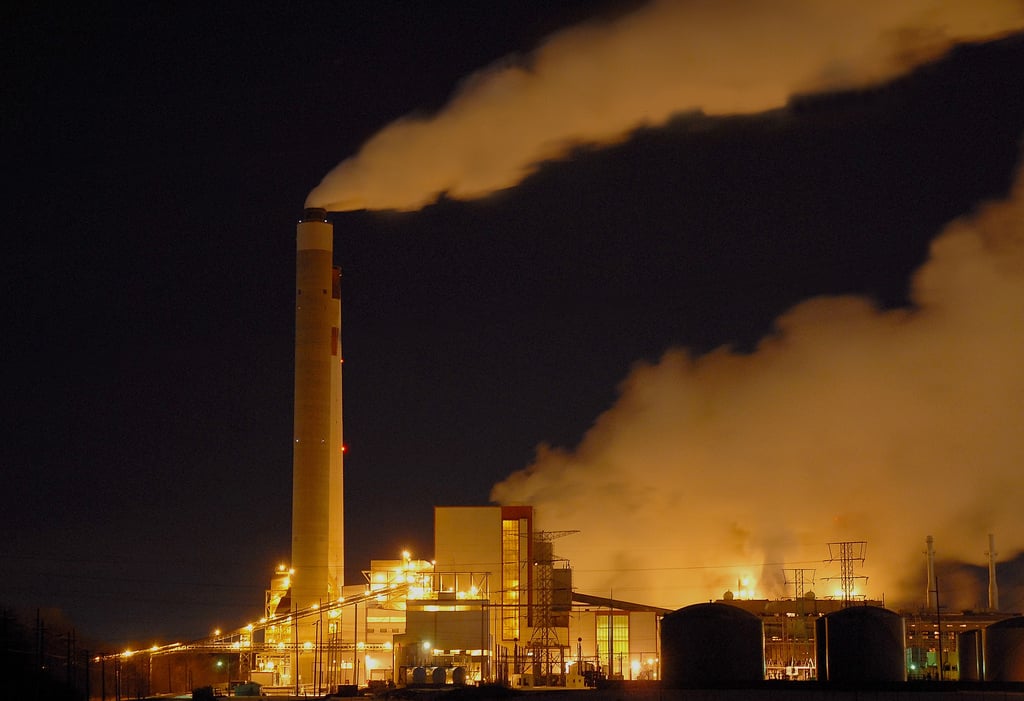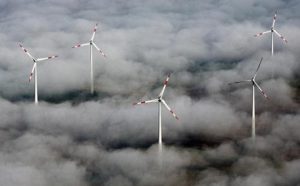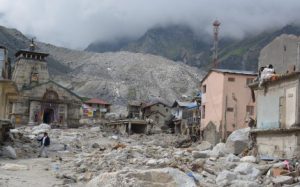On Tuesday, the Obama Administration unveiled its Climate Action Plan. We asked some of the leading figures in the environmental and energy sectors for their response to the US plans for tackling climate change.
Read also: China needs to do better than Obama’s climate plan
Dr Simon Anderson, Head of IIED’s Climate Change Group
“The emphasis on strengthening local governance for adaptation planning, developing new risk management tools and climate adaptation technology is helpful. Framing this section in terms of ‘security’ is misguided and is likely to bias the way that resources are deployed for this objective. The main instrument for addressing this objective is and will be USAID – an agency that notoriously acts in isolation and seldom consults adequately with country governments before implementing such initiatives. Examples include the USAID-funded projects Hariyo Ban in Nepal, and REGAL-IR in Kenya.
The resources mobilised so far by the US and other industrialised countries are dwarfed by the imposed costs of increased climate variability on the economies and societies in the developing world. Optimistic assumptions of the scale of private sector contributions to resilience investments have proved so far to be ‘pie in the sky’ and there is no evidence that this will change any time soon – at least until medium term profits can be guaranteed to investors. The cases of failed weather-indexed crop insurance show how reluctant the private sector is to offset the costs of adaptation to the climate vulnerable.
The US cannot claim to have led anything in the negotiations so far – apart from some obfuscation. If Obama’s emphasis on ‘ambition, inclusiveness and flexibility’ leads to support for common but differentiated responsibility for emissions reductions and contributions to finance for adaptation then this is to be welcomed.”
Jennifer Morgan, Director Climate and Energy Program, World Resources Institute
“In his national climate plan, President Obama has laid out a comprehensive national plan to reduce US greenhouse gas emissions and prepare the US for the impacts of climate change. If the plan is fully and ambitiously implemented, it can reset the US climate agenda and orient the US back towards reaching its target of reducing greenhouse gas emissions by 17% below 2005 levels by 2020, which in turn will provide the US diplomatic team more credibility when engaging with other countries such as China.
Specifically, the Administration’s intent to decarbonize the US power sector is tremendously important, particularly when engaging with China which also is undertaking efforts to clean up this sector. Finding ways for each country to shift its economic and growth models from high to low carbon will be fundamental to keeping global average temperature below 2 degrees C. This will require cooperation, but also catalyse competition, and President Obama draws on both in his Plan.
In his speech, Obama stated, “countries like China and Germany are going all in in the race for clean energy. I believe Americans build things better than anybody else. I want America to win that race.” The President challenged business leaders to seize the opportunities emerging as the US transitions to a low-carbon economy.
Indeed, both the US and China are competing for the tremendous business opportunities that come from increased global demand for clean energy. Currently, the US and China are leading global investment and development of renewables. Last year, the United States invested $35.6 billion in clean energy while adding over 16.7 GW of clean energy capacity. China invested $65.1 billion while adding 23 GW in capacity.
Even as US and China’s industries compete in the emerging market for clean energy, the President highlighted the enormous opportunities for cooperation between the two countries. The US and China have already benefited from numerous mutual investments and partnerships around clean energy.
Following Secretary of State John Kerry’s trip to China in April, the US and China created the US-China Climate Change Working Group to find new, creative ways to tackle rising emissions and “inspire the world”. At the Strategic and Economic Dialogue in Washington next month, the working group will present new joint initiatives to cut carbon emissions.
Based on the recent meeting of the two countries’ Presidents, and the renewed vigor of the Obama Administration, hopefully the two can leap ahead, and move to more transformational ways of working together to accelerate the pace and the scale of action.”
Eric Pooley, Senior Vice President, Environmental Defense Fund
“When they write the history of how political leaders in the United States finally got serious about climate change, President’s Obama’s remarkable speech – unveiling a powerful new climate agenda – will be seen as a turning point. It marks the decisive end of a period of climate silence at the federal level and the beginning of a time of intensified climate action. It marks the moment when Washington began to catch up with public opinion on this issue. For several years now, while our national leaders have been largely avoiding the issue, local communities have been suffering the impacts of climate change – crippling drought, wildfire, storms and flooding. That triggered a shift in opinion to which the politicians are still waking up.
During those years the Obama Administration scored some big wins – doubling fuel economy standards for passenger vehicles, for example, and accelerating the transition to renewables by investing some $90 billion via the stimulus act. But the President did not find many occasions to address climate change in public or stand up to those who spread doubt and confusion on the issue.
That changed yesterday. By announcing his intention to move ahead with a package of executive actions that do not require Congressional approval – including the first-ever carbon standards for US power plants, which generate about 40% of US climate pollution – the President signalled that the US will no longer allow itself to be held hostage by the opponents of sensible climate policy. Of course huge political fights lie ahead. Of course legislative action will ultimately be required. And of course international agreements remain essential. The President laid out a new roadmap yesterday, one that I believe will ultimately lead the US in the direction of national and international action that is equal to the threat. The president’s climate address was a long time coming, but it was worth the wait.”
Professor Martin Bunzl, Founding Director, Rutgers Initiative on Climate and Society
“President Obama’s climate initiative is a welcome declaration of intent that, if implemented, stands a good chance of allowing the United States to reach the goal of reducing its greenhouse gasses to 83% of 2005 levels. (That goal is modest in the light of the effects of the 2008 recession on energy demand. US greenhouse gas output in 2005 was 7,196 million metric tons of CO2 equivalent but fell by 9.3% to 6,702 in 2011.) Whether the initiative can be implemented remains to be seen, since political and legal challenges can be expected. But even if it is implemented, because it is in the form of an executive order, its longevity will depend on ongoing presidential support – not just by Obama but subsequent presidents as well.
That said, if the changes are implemented quickly enough they may become a de facto fait acomplis since they involve large scale long term decisions. There is an underlying economic reality driving all of this: “fracking” has dramatically increased the supply, and lowered the price, of natural gas in the United States, rendering coal plants uneconomical. That is why no new coal plants are being built and the accelerated retirement of existing plants has its own economic logic. However it would be naïve to think that coal is going to stay in the ground. The United States coal industry is already undergoing the process of transformation into an export market. That speaks to the reality that absent global action, United States policy in and of itself will be of limited value, especially looking forward over the next 20 years as energy demand grows dramatically around the great the world.
The really crucial question is whether US action can and will prompt action by others. One of the virtues of the Waxman-Markey bill on climate that failed to pass the US Congress was that it leveraged unilateral US action into a global arrangement by creating import penalties for countries that failed to match the bill’s provisions. Whether or not it might be possible to graft this idea onto the President’s initiative remains to be seen but without it, the impact of the initiative will rest on its power to lead by example. That is not unimportant, especially when it comes to the content of the “Durban Agreement”. Although China and the United States were parties to the international agreement in Durban in 2011 to “as early as possible but no later than 2015” adopt a “legal instrument or an agreed outcome with legal force … to come into effect and be implemented from 2020” (quoting from Decision 1/CP.17), it is important to notice that this language leaves the content of such an instrument or agreement undefined and could (for example) only deal with carbon intensity as opposed to absolute levels of carbon use.”
Dr Saleemul Huq, Senior Fellow, IIED Climate Change Group
“This is the first time that the Federal government has announced significant adaptation actions at home, reflecting the fact that – importantly – Obama recognises that the United States faces adverse impacts from climate change that it must adapt to. On the international level however the promises for action, while welcome, are too little too late! While it is good to see a leader of the world’s richest country and biggest cumulative polluter finally promise to take actions, after over a decade of refusal to do so, the problem has become much bigger while the US was ignoring it. Hence the world is now headed towards 4-degree temperature rise by 2100 unless much more drastic actions are undertaken on mitigation by all countries including the United States. President Obama says he wants the US to lead this effort globally. His promise is welcome, but his actions still fall short of what is required.”
Philip Boxell, Environmental Lawyer, policy advisor and researcher
“I was disappointed by President Obama’s speech. He did not directly take on the vested corporate, financial and fossil specific interests. He did not take on Congress. And he did not address the American electorate’s responsibility for putting conservatives without a conscience in office.
As we all painfully understand, America has fallen down since Bill Clinton. It is interesting to note that yesterday the US Supreme Court struck down DOMA, an insidious statute signed into law in 1996. Bill Clinton cut federal environmental enforcement by delegating the authority to the states in the ReInvent Government Act so folks like Mitt Romney (then Massachusetts Governor) could cut the Mass DEP by 40%. And, of course, Bill Clinton refused to bully pulpit Congress on behalf of Kyoto.
I am heartened by Secretary Kerry’s efforts to engage China. A US FAA embassy liaison for China commented at a dinner about a year ago that China has the world’s safest civil aviation record. And a Natural Resources Defence Council Beijing staff member commented also about a year ago that China has among the safest nuclear power records in the world. When I asked the official if he thought that China now has the resources to competently address the technology and management issues if it so desired, the official responded that he thought the country could. So my hope is not necessarily tied to the July report, but to ongoing discussions between the two countries, Germany, the EU, the MEF, and even the UNFCCC notwithstanding the disappointments over the years.
Greenpeace and Friends of the Earth joined James Hansen in opposing the 2009 Waxman-Markey US House passed act because, among other issues, the act would reduce emissions 17% by 2020 below 2005 levels rather than 1992 levels. Hansen calculated the emissions would only be 3% below 1992 levels. Obama yesterday again proposed the 2005 base year. Last night I heard a US speaker at a Beijing Energy Network event talk about “new normals” by Sina Weibo users as they become more numbed to unhealthy and hazardous air pollution levels. As I look at war torn areas of world and over history, I wonder if the standard of living in the West has been a blip for humanity. Will we just become used to “new normals”?
Yet even though I agreed with Greenpeace, Friends of Nature and James Hansen’s opposition to the 2009 Waxman-Markey US House bill, I think that today we must support President Obama. We must take whatever we can and move on. We are losing too much time.”
He Gang, Ph.D. Candidate, Energy and Resources Group, UC Berkeley
“The US has been moving slowly in the struggle against global climate change. Obama’s new climate change plan wants to change the course of key policies on carbon control over existing power plants, clean energy development, fuel standards and the US’s leadership in climate policy with three pillars: mitigation, adaptation and international cooperation. The plan reaffirmed the Greenhouse Gas (GHG) mitigation target of 17 percent reduction by 2020 compared to the 2005 level. We have many reasons to see this as a significant step given the US’s record on issues like a carbon tax or national cap and trade, or the setbacks in climate legislation.
Yet the 17 percent target is not impressive. According to the Environment Protection Agency (EPA)’s carbon inventory data, the U.S.’s carbon emission has been decreasing since 2008, but this is primarily due to the economic recession and the boom in shale gas. The resulting collapse in coal consumption meant the U.S.’s CO2 emissions from energy use fell to a 20-year low in 2012. If the US’s GHG current emission trend continues, by 2020 the U.S. will achieve the 17 percent reduction without extra efforts.
The US needs to do more. The world needs to achieve 80 per cent carbon mitigation by 2050, compared to 1990 levels, in order to prevent a 2 degree Celsius increase. The US needs to provide 30 million tons additional annual GHG reduction to meet with this target (as also proposed by Obama in 2008 when he ran for president). This will require more bold action and smarter policy to set the incentives right and get the punishment in place, most importantly, pricing carbon and phasing out subsidising dirty fuels.
The shale gas revolution is an opportunity for the Obama Administration to move on climate policy. A climate deal without the US’s contribution is by no means a complete deal, the leadership of the U.S. is demanded. The international community should work together with the US to achieve a meaningful global agreement on climate change.”






